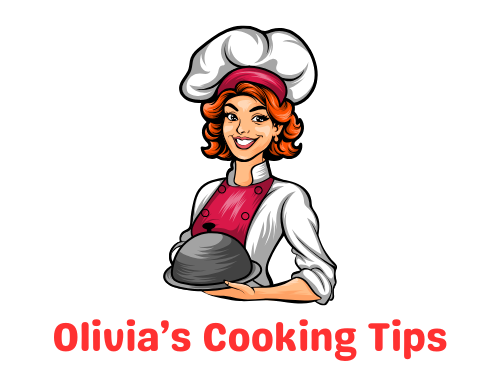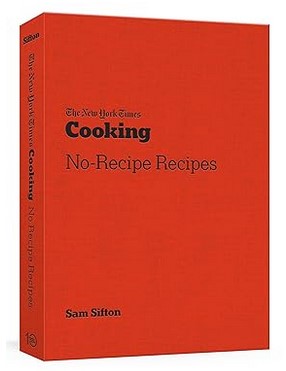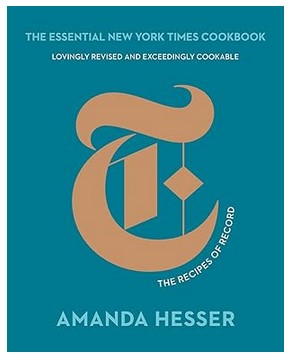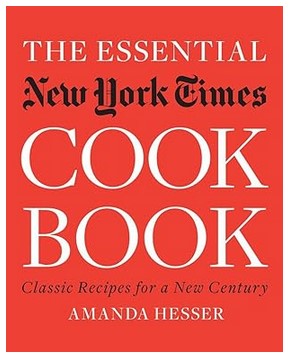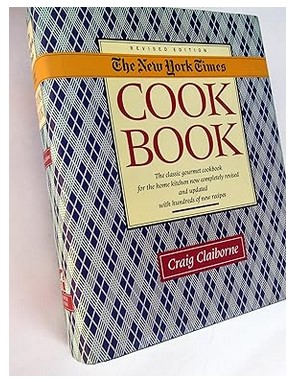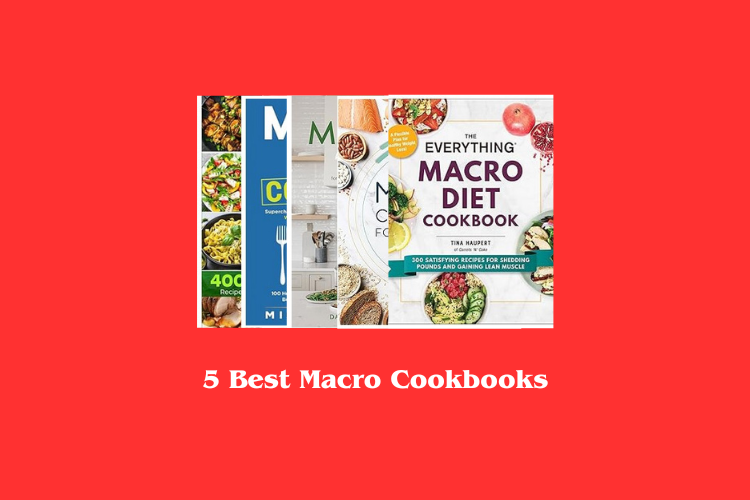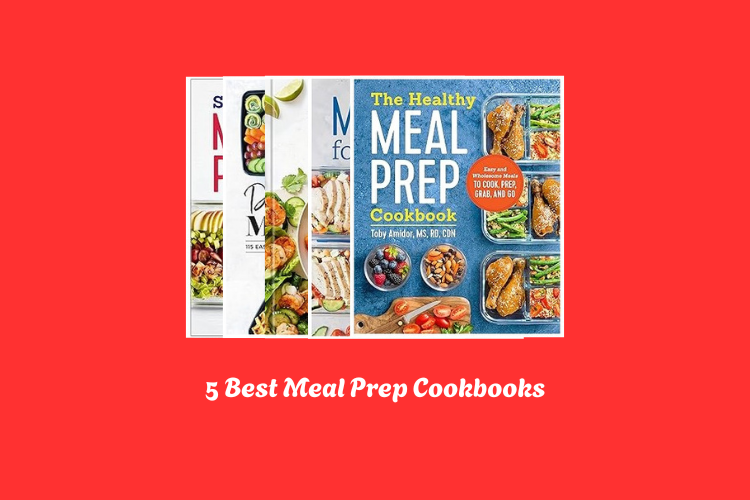Discover the Flavorful World of the New York Times Cookbook
Cooking can be a creative and enjoyable process, but sometimes following detailed recipes can feel restrictive. What if you could cook delicious meals without sticking strictly to a set recipe? The “New York Times Cookbook” by Sam Sifton offers just that.
This cookbook embraces a new, flexible way of cooking one that allows for improvisation and adaptation to what ingredients you have at hand. Perfect for home cooks who want to break free from the usual cooking routine, this book brings a fresh, simple approach to weeknight meals.
Let’s dive deeper into the details of this cookbook, exploring its author, the book itself, the categories of recipes it offers, and the special features that make it unique.
Author Background
 Who is Sam Sifton?
Who is Sam Sifton?
Sam Sifton is a well-known name in the culinary world, particularly for his work as the founding editor of New York Times Cooking. His background as a food writer and editor has made him an expert in simplifying and democratizing cooking for everyday people.
With years of experience under his belt, Sifton brings a wealth of knowledge to the kitchen, making complex dishes more accessible and fun.
His work with the New York Times Cooking team has earned him recognition as one of the leading voices in modern cooking. This cookbook is his debut in the world of printed culinary guides, and it’s clear from his approach that Sifton believes anyone can cook great meals, no matter their skill level.
Cookbook Overview
A New Way of Cooking
The New York Times Cookbook is a refreshing take on traditional cookbooks. Instead of following strict ingredient lists and instructions, it introduces the concept of “no-recipe” recipes.
This style of cooking encourages you to work with the ingredients you have, with the flexibility to make substitutions along the way. Whether you’re a beginner or an experienced cook, this book makes meal preparation feel less daunting and more intuitive.
The cookbook features over 100 recipes that are easy to follow and fun to experiment with. Each recipe is accompanied by stunning photographs that showcase the finished dishes, making it easy to visualize the outcome.
The “no-recipe” approach is perfect for those who enjoy a more freeform and creative style of cooking, without sacrificing flavor or quality.
Recipe Categories
Everyday Dishes for All Occasions
The recipes in this cookbook are designed to fit into your daily routine. They focus on simple ingredients that you can find at any grocery store. Here are some of the categories you’ll find:
-
Quick Weeknight Meals: These dishes can be made in 30 minutes or less, perfect for those busy nights when you don’t want to spend hours in the kitchen. Examples include Fried Egg Quesadillas and Weeknight Fried Rice.
-
Comfort Food: Sifton understands the value of comfort food that’s quick and easy to prepare. Recipes like Pizza without a Crust and Oven S’Mores are sure to hit the spot after a long day.
-
Simple Substitutions: The book encourages flexibility, making it easy to swap out ingredients depending on what you have available. You might find yourself replacing one protein with another or experimenting with different spices to match your taste.
-
Creative Meals: Recipes such as Chicken with Caramelized Onions and Croutons or Roasted Shrimp Tacos offer fresh takes on classic dishes that are as easy to make as they are delicious.
Features
The Beauty of No-Recipe Recipes
One of the key features of this cookbook is its emphasis on improvisation. Rather than following step-by-step directions, you’re encouraged to think on your feet, adjust based on what you have, and make the dish your own. This kind of flexible cooking can feel liberating, especially for those who find traditional cooking too rigid or intimidating.
Flexibound Format
The book is designed with a flexible, durable binding, making it easy to use in the kitchen. Whether you’re flipping through it to find a quick recipe or keeping it open on the counter while you cook, the format is user-friendly. This makes it the perfect addition to any home cook’s collection, offering both convenience and functionality.
Visual Inspiration
Each recipe is accompanied by vibrant, full-color photographs, which help guide you through the cooking process. These images also offer visual inspiration, giving you a clear idea of how your meal should look when it’s finished. The stunning photography enhances the overall experience, making cooking feel like an enjoyable visual journey.
A Focus on Accessibility
Sam Sifton’s approach to cooking is all about making food accessible to everyone. Whether you’re an experienced cook or just starting, this book allows you to experiment without fear of making a mistake. You don’t need to follow each step to the letter. With this cookbook, you have the freedom to improvise, substitute, and adjust to suit your tastes and the ingredients you have.
The New York Times Cookbook by Sam Sifton is a unique and practical guide that encourages improvisational cooking. It’s perfect for anyone who wants to add creativity and flexibility to their weeknight meals.
With over 100 recipes, stunning photographs, and a user-friendly format, this book is a must-have for those who appreciate the art of cooking without boundaries. Whether you’re cooking for one or feeding a family, Sifton’s approach will inspire you to cook with confidence and joy.
The New York Times Cookbook is more than a book. It’s a treasure chest for anyone who loves to cook or wants to learn. With over a thousand recipes, this cookbook brings American kitchens to life. It includes both old favorites and new dishes. From everyday meals to special treats, it covers a wide range of tastes.
Author Background
 Who is Amanda Hesser?
Who is Amanda Hesser?
Amanda Hesser: A Trusted Voice in Food
Amanda Hesser worked as a food editor at The New York Times. She spent years collecting and testing recipes. Her passion shows in the way she writes.
Amanda understands what home cooks need clear steps, good flavors, and simple instructions. She also won the James Beard Award, one of the top honors in the food world.
That shows her deep knowledge and love for cooking. Ten years after her first cookbook, she returned with an updated version. This edition offers something for every home cook, whether experienced or just starting.
Cookbook Overview
A Collection That Grows With Time
The New York Times Cookbook includes more than 1,000 recipes. Amanda added 120 new ones in the updated version. These new dishes were created by some of today’s top chefs and writers. You’ll find modern meals like:
-
Samin Nosrat’s Sabzi Polo (Herbed Rice with Tahdig)
-
Todd Richards’s Fried Catfish with Hot Sauce
-
J. Kenji López-Alt’s Cheesy Hasselback Potato Gratin
These sit next to classic recipes like:
-
Purple Plum Torte
-
David Eyre’s Pancake
-
Pamela Sherrid’s Summer Pasta
-
Caesar Salad from the 1940s
-
No-Knead Bread
Amanda tested every recipe. She also wrote personal notes to guide you through the cooking process. Her tone is warm and friendly, like talking to a friend in the kitchen.
Awards and Praise
This cookbook received praise from many trusted sources. It was named:
-
A KCRW Top 10 Food Book of 2021
-
A Minnesota Star Tribune Top 15 Cookbook of 2021
-
A WBUR Here & Now Favorite Cookbook of 2021
It’s clear this book is well-loved by readers and experts alike.
Recipe Categories
Recipes for Every Taste and Season
The New York Times Cookbook covers many types of food. You’ll find meals for breakfast, lunch, and dinner. It also includes snacks, desserts, and drinks. Here are some popular categories:
Breakfast
Start your day with something hearty or light. Options include pancakes, eggs, baked goods, and warm cereals.
Lunch
Easy meals like sandwiches, salads, and soups fill the lunch section. They’re great for busy days.
Dinner
Dinner recipes range from simple pasta dishes to full roasts. There are vegetarian meals as well as meat-based ones.
Baked Goods
Cakes, cookies, and pies make this section fun. The Purple Plum Torte is a fan favorite.
Seasonal Dishes
Amanda includes recipes for each season. You’ll find light meals for summer and warm stews for winter.
International Flavors
Though focused on American cooking, the book includes flavors from other cultures. Dishes like Sabzi Polo show the richness of global food traditions.
Features
What Makes This Cookbook Special?
Easy-to-Follow Instructions
Each recipe includes clear steps. The ingredients are listed in order, and the directions are short and direct. This helps beginners feel confident.
Personal Notes from Amanda
Amanda adds little notes next to some recipes. She might tell a short story or share a tip. These comments make the book feel personal.
Go-To Favorites
She marks her own favorite recipes. This helps readers know which dishes are extra special or reliable.
Wide Variety
With more than a thousand recipes, you can always find something new. Whether cooking for one or for a crowd, this book has you covered.
Tested and Trusted
Amanda tested every recipe herself. That means fewer surprises in the kitchen. You can trust the results.
Old Meets New
The cookbook honors classic recipes while adding new ones. It feels both timeless and fresh.
The New York Times Cookbook is a strong guide for home cooking. It offers a mix of history, flavor, and ease. Amanda Hesser’s careful work makes this book a smart choice for both beginners and seasoned cooks. Whether you’re making breakfast or planning a holiday dinner, this cookbook helps you do it with care and joy.
For over 150 years, The New York Times has published recipes loved by many across America. Now, all those recipes come together in one special book The Essential New York Times Cookbook.
This collection, updated by Amanda Hesser, brings famous dishes and food stories into one easy-to-use cookbook. Whether you’re new to cooking or have years of experience, this book has something for you.
Let’s explore the background of the author, what’s inside the book, and why many people enjoy cooking from it.
Cookbook Overview
A Collection of Over 1,000 Recipes
The Essential New York Times Cookbook brings together more than 1,000 recipes. These come from famous chefs, skilled home cooks, and Times food writers. Some recipes go back to the 19th century. Others are more modern.
Inside, you’ll find meals for every occasion. From everyday dinners to special holiday treats. Some names may feel familiar Plum Torte, No-Knead Bread, and Caesar Salad. Others may be new but still easy to try.
A Kitchen Companion for Life
This is not just a recipe book. It’s a history of how American cooking has changed over time. Amanda shares fun facts and stories in each chapter. She explains where the recipe came from and why it became popular. This makes the book both useful and interesting to read.
People who cooked from the early New York Times cookbooks, like Craig Claiborne’s, will enjoy seeing their old favorites. New cooks will also feel welcome. The directions are clear, the ingredients are common, and Amanda’s notes help guide each step.
Recipe Categories
Classics from the Past
Some recipes have been around for many years. They are simple, tasty, and full of tradition. You’ll find dishes like:
-
Raspberry Granita from the 1800s
-
Caesar Salad from the 1940s
-
Flourless Chocolate Cake from the 1960s
These old favorites still taste great today.
Modern Favorites
The cookbook also includes recipes that became popular in recent years. These are fresh and healthy options that fit today’s lifestyle, such as:
-
Fava Bean Salad
-
No-Knead Bread
-
Slow-Roasted Fish
They are great for people who enjoy clean flavors and easy prep.
Seasonal and Holiday Recipes
Want to cook for a summer picnic or a winter dinner party? You’ll find seasonal recipes like:
-
Pamela Sherrid’s Summer Pasta
-
Holiday Roasts
-
Thanksgiving sides and desserts
Each dish helps you match your cooking to the time of year.
Breakfast, Lunch, and Dinner
You don’t have to guess what to make each day. This cookbook has ideas for:
-
Morning meals: pancakes, eggs, and muffins
-
Simple lunches: soups, sandwiches, and salads
-
Full dinners: pasta, fish, meat, and more
There’s something for every meal and mood.
Snacks and Desserts
Need a sweet treat or a quick snack? You’ll find easy recipes such as:
-
Cookies and bars
-
Pies and cakes
-
Fruit desserts
One of the most loved is the Plum Torte, a soft cake with juicy plums on top.
Features
Amanda’s Helpful Notes
Every recipe comes with a short story or note from Amanda. She might share where the recipe came from or why it became famous. Sometimes, she adds a tip to make the dish easier or tastier. These notes feel like advice from a friend.
Easy-to-Follow Instructions
The recipes use simple language. Steps are short and clear. Amanda also explains basic techniques, like how to roll out dough or roast meat slowly. This helps both new cooks and experienced ones feel confident.
Tested for Today’s Kitchen
All recipes were tested and updated to work with modern tools and ingredients. That means you won’t need special equipment or hard-to-find items. Amanda made sure the flavors still shine, even if you use store-bought products.
Organized by Type
The book is divided into chapters like Breakfast, Main Dishes, Sides, and Desserts. You can quickly find what you need. There’s also an index at the back for fast searching.
A Mix of History and Flavor
Each chapter begins with a short piece about how American food has changed. You learn a little history while getting new ideas for meals. It’s a cookbook and a time capsule in one.
The Essential New York Times Cookbook is more than just recipes. It’s a story of food, family, and traditions that span over a century. With Amanda Hesser’s voice guiding the way, cooking feels friendly, not hard. From old classics to fresh new ideas, this book helps everyone bring tasty meals to their table. Want to try something new tonight? Open the book, pick a recipe, and start cooking.
by Craig Claiborne
Many people love to cook at home. Some want simple meals. Others enjoy trying new recipes from around the world. For over 60 years, one cookbook has helped home cooks do both.
It’s called The New York Times Cook Book. Written by Craig Claiborne, this book has become a favorite in many kitchens. Let’s explore the story behind this cookbook, what’s inside it, and why it still matters today.
Author Background
 Who Was Craig Claiborne?
Who Was Craig Claiborne?
Craig Claiborne was a well-known food writer. He worked for The New York Times for many years. He was one of the first people to write about food seriously in newspapers.
Claiborne loved food from many cultures. He traveled a lot and brought back ideas from different countries.
These ideas helped him create a cookbook full of variety and flavor. He didn’t just like fancy dishes. He also respected simple meals. His goal was to help regular people cook well at home. Claiborne believed anyone could make good food with the right tools and clear instructions.
Why He Wrote This Book
In 1961, Claiborne decided to put his best recipes into one book. He wanted to give readers something useful, not just pretty pictures. The book focused on real cooking with easy-to-follow steps. Since then, it has become a trusted guide for many generations.
Cookbook Overview
A Book That Keeps Growing
The New York Times Cook Book first came out in 1961. Since then, it has sold nearly three million copies. That shows how much people trust it. Over the years, the book has changed and improved. About 40% of the original recipes have been replaced or updated.
This updated version includes modern ideas. It uses fresh herbs and even explains how to use a food processor. It also has more recipes from places like China and India. Claiborne wanted the book to grow with time, and it has.
Something for Every Home
This cookbook isn’t just for special meals. It includes dishes for family dinners and formal events. The recipes cover many types of food, so there’s something for everyone. Whether you want soup, pasta, or dessert, you’ll find it here.
Recipe Categories
American Favorites
The book has many traditional American recipes. These include classic comfort foods like meatloaf, fried chicken, and apple pie. These dishes are great for everyday meals or holidays.
International Flavors
Claiborne added recipes from 20 different countries. These include Chinese stir-fry, Indian curry, and Italian pasta dishes. The recipes help cooks explore new tastes without needing special skills or hard-to-find ingredients.
Pasta, Rice, and Grains
There’s a strong focus on pasta, rice, and grains in this updated version. These recipes are filling and flexible. They work well for quick dinners or big family meals.
Fish and Seafood
More fish recipes were added in later editions. These dishes are healthy and full of flavor. Claiborne made sure the steps were easy to follow, even for beginners.
Soups, Salads, and Breads
You’ll find comforting soups for cold days, fresh salads for warm ones, and bread recipes for all seasons. These recipes use common ingredients but deliver big taste.
Sauces, Dressings, and Preserves
The book also covers homemade sauces and salad dressings. There are tips for making jams, pickles, and other preserved foods. These extras can turn a simple meal into something special.
Desserts
There are plenty of dessert recipes too. Cakes, cookies, puddings, and more. These sweets bring joy to any table and are easy to make.
Features
Clear Instructions
Every recipe in the book has simple steps. Even someone new to cooking can follow along. Claiborne wrote in a clear way that’s easy to understand. No fancy words. Just clear directions.
Updated for Modern Kitchens
Claiborne added tips for using new tools like food processors. He also included modern ingredients and cooking methods. This helps the book stay useful, even after many years.
Cross-References and Index
The cookbook includes helpful tools like a table of equivalents and a full index. This makes it easy to find what you need. If you have one ingredient and want ideas, you can check the index and find several options.
Fits All Occasions
From simple weekday meals to big parties, this book has recipes for every situation. You don’t need to buy another cookbook. This one covers everything.
Long-Lasting Value
Many people pass this cookbook down to their children. It’s not just a collection of recipes. It’s a guide, a teacher, and a friend in the kitchen.
The New York Times Cook Book has stood the test of time. With its wide range of recipes, simple language, and thoughtful updates, it remains a favorite for both new and experienced cooks. Craig Claiborne created more than a cookbook. He gave people the confidence to cook and enjoy food at home, one dish at a time.
